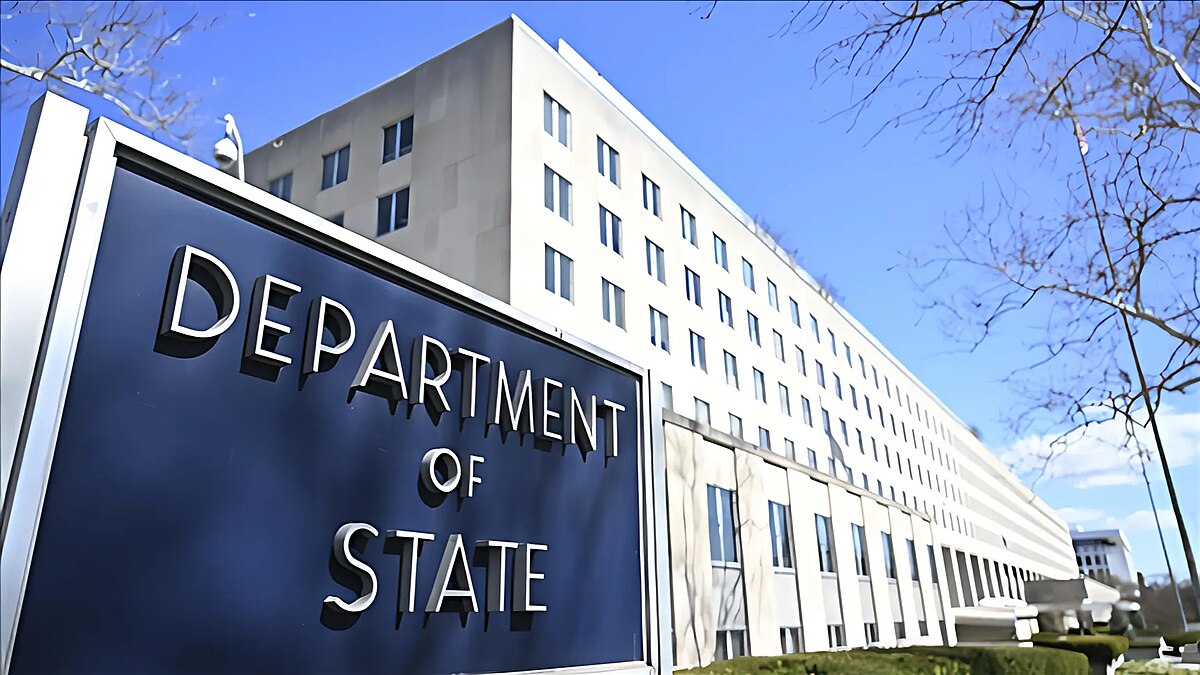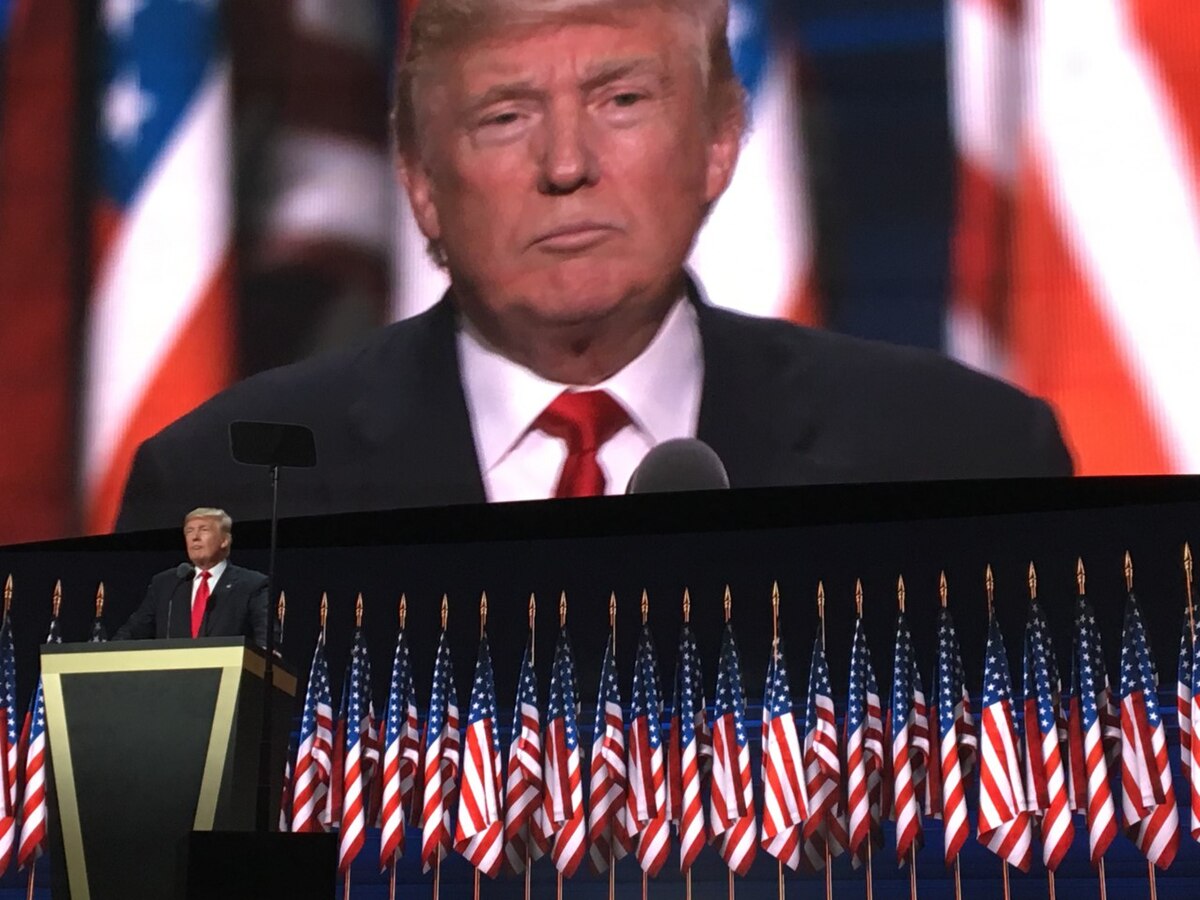- 14 3402-5578
- Rua Hygino Muzy Filho, 737, MARÍLIA - SP
- contato@latinoobservatory.org
 United States Department of State
United States Department of State
On Monday, May 12, a group of 49 refugees from South Africa were received at Dulles International Airport by a delegation from the United States government, a situation that, in addition to marking the Trump administration's first opening to immigration, caused controversy. This is because these refugees are from the country's white minority, the so-called Afrikaners who, according to official statements from the South African government, the group and the Afrikaner population in general in the country, are not being persecuted or suffering retaliation due to their race or ethnicity, which is the White House's justification for receiving them. In this process, the group was guaranteed an expedited immigration process, food and housing while this group is in the country. As mentioned earlier, after a few months of strong suspension of programs for immigrants and refugees, this initiative to open up immigration to a minority group has raised internal questions in the US, especially about why this group is being privileged to the detriment of the fact that, officially, they are not experiencing any retaliation in South Africa or facing adverse situations, such as natural disasters.
The controversy involving the Afrikaners is a point of instability in the turbulent relationship that has existed between South Africa and the United States since Trump took office. The process began with the signing of a law by South African President Cyril Ramaphosa, which would determine, in certain cases, the appropriation of property by the State without compensation. To understand this legislation, we must go back to the country's past, which was marked by the Apartheid regime between 1948 and 1994, which established political and social racial segregation in the country. This model was defended by the country's white minority, the Afrikaners, descendants of Dutch and British colonizers, who monopolized power and concentrated income among their small population. During this period marked by strong repression against demonstrations, disparities between groups in the country, and violence, between 1946 and 1990, while the percentage of whites in the country went from 20% to 13%, and the black population rose from 68.6% to 76%, it is clear how the lives of the largest portion of the country's population were affected by a small group that heldpower.
This scenario was conducive to a very high concentration of income in the country. In 2013, for example, the income of a black family was equal to one-sixth of the average income of a white family in the country, signaling the strong inequality that remained post-apartheid, and initiatives by the dominant party, the African National Congress, were necessary to reverse this scenario. Therefore, President Cyril's measure would have a justification for reducing inequalities in the country, even if it is controversial due to the current problems faced by the African nation, such as a serious economic crisis. However, none of these points seem to be in the White House's diplomatic playbook, which only brought the argument of racial persecution to the case of the Afrikaners.
Interestingly, one of the unofficial members of Trump's cabinet is South African billionaire Elon Musk, who is likely the linchpin of this dispute between the two countries. The tycoon took over the Department of Government Efficiency (DOGE) and has since made strong statements against the actions of the South African government. For example, Musk has accused the country of having “racist property laws” and that South Africa is committing “genocide” against its white farmers. As has already been noted, whether by official statements from the South African government or the country's historical past, these initiatives do not constitute genocide or a direct attack on the country's white population. Therefore, the controversy surrounding the reception of this group of Afrikaners, as part of the context of reducing migratory flows to the country, is clear.
In addition to his campaign promise to deport eleven million undocumented individuals residing inthe country, the White House and its agencies are staffed with agents focused on scrutinizing the flow of migration to the United States. In this sense, several examples are evident, such as sending army troops to the border with Mexico, threatening and intervening in the immigration policies of the so-called “Sanctuary Cities”, much of it governedby Democrats, revoking visas of students from some of the country’s most renowned universities and deporting them, “wrongly” deporting people from thecountry and, in some comments and executive orders that go against the country’s magna carta, insinuating a motivation to reverse the United States’ “jus solis” right.
In other words, a bifurcation is evident: on one hand, the Trump administration has been restricting immigration to the country, increasing deportations and making the process of obtaining rights, such as citizenship, more complicated; on the other, a small group of individuals who, officially, do not suffer any government or political persecution, are welcomed by the government with a path to obtain nationality faster than immigrants who have lived in the country for decades. Thus, it is clear that internal groups are questioning this initiative by the White House, which is controversial in every sense. However, some points also need to be mentioned, such as the trade war initiated by Trump, which generated the infamous “tariff hike” a few weeks ago. In short, the main objective of this imposition of tariffs would be to favor the United States in trade relations with countries that have a surplus with the country, generating pressure for new trade agreements, as was the case with the recent agreement with the UnitedKingdom. This type of initiative is marked by pressure against certain countries, such as Canada, China and Mexico, the first to receive tariffs, or Ukraine, which recently signed an agreement that facilitated American exploration of minerals from the country in exchange for military aid in the conflict against Russia. In this sense, South Africa, which has a vast and rich reserve of minerals, could be a target of the White House for a similar agreement, which would facilitate access to the country's resources. To this end, the laws implemented by the government would be the target, ensuring a huge effect among South Africans to the point of making President Cyril meet with Trump in the coming days to discuss this tension between the two countries.
For commercial reasons or not, the reception of Afrikaner refugees is part of an unprecedented moment in the history of the United States. In a context of strong persecution of immigrants and reduction of their freedoms, a small group is received by the White House with an argument seen as unfounded of racial persecution, counting on a much easier path to a possible American nationality, while thousands of individuals who would be in the “queue” for this process are facing problems. The question remains whether situations like this will be repeated in the coming months, in this new migration paradigm imposed by the second Trump administration.











